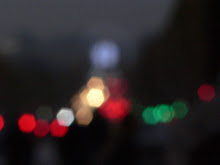Two aesthetic representations of the wildebeest migration are ubiquitous in the western media: (1) the overhead shot, probably taken from a light plane or balloon, of the long lines of animals leading out across the savanna from densely packed groups; and (2) densely packed groups waiting at the edge of a river brimming with crocs… and the subsequent burst of movement as the wildebeest charge ahead to the other side. In each case the images are the end product of incredible photographers with extraordinary equipment and endless time, months usually. All this time and money and effort will generally yield a few shots or seconds of video worthy of publication. On T.V. and in magazines the intent is to grab our attention for the few seconds that we may have to spare and are willing to surrender to the image or video. Not surprisingly, to succeed in this pursuit, editors and producers have decided to go with sensational images of densely packed animals – generally engaged in some dramatic collection action. These dramatics are then typically enhanced through tricks of perspective that endow us, the viewers, with superhuman abilities of observation… we soar above the animals, zoom in on their muscle zone and panicked eyes, and slow down time to fractions of a second. Of course, as viewers we now expect this as these strategies, these perspectives, are used continually to grab our attention – in movies, commercials, etc… why should it be any different for wildlife content?
My intent here is not to justify our failure to get any of these classic images on our recent trip to see the migration, but rather to describe that the migration is so much more than these few images… and ultimately inspires a different, perhaps, more mature part of the brain. Our migration experience was drawn out, both in space and time. It takes immeasurable time to see all the animals that are aggregated in a particular area. On our way to Ndutu, in the Ngorongoro Conservation Area, we drove for more than an hour through a great expanse of wildebeest. These animals were not densely packed, shoulder to shoulder, but dispersed and placid. With a telephoto lens you can get a few in the foreground and a few in the background. No more. With a 50mm lens you can see perhaps several hundred animals… but most of them will appear as simple dots in the distance. Again, to see the migration, you need time… the heft of this spectacle is conferred over days. And the amazement is not at seeing animals packed in like feedlot livestock, but at seeing them spread out across an ocean of grass, grazing and snorting– their young foals at their sides… for miles and miles and miles beyond where you can see. It truly defies photography.




I'm VERY impressed with the photos--whether or not they match the typical Animal Planet variety. Much more natural, much more real. I suspect the crowded shots are the professional photographer's means to represent what you've described. As for me, I appreciate your descriptions WAY BEYOND those "overdone" images . . .
ReplyDelete